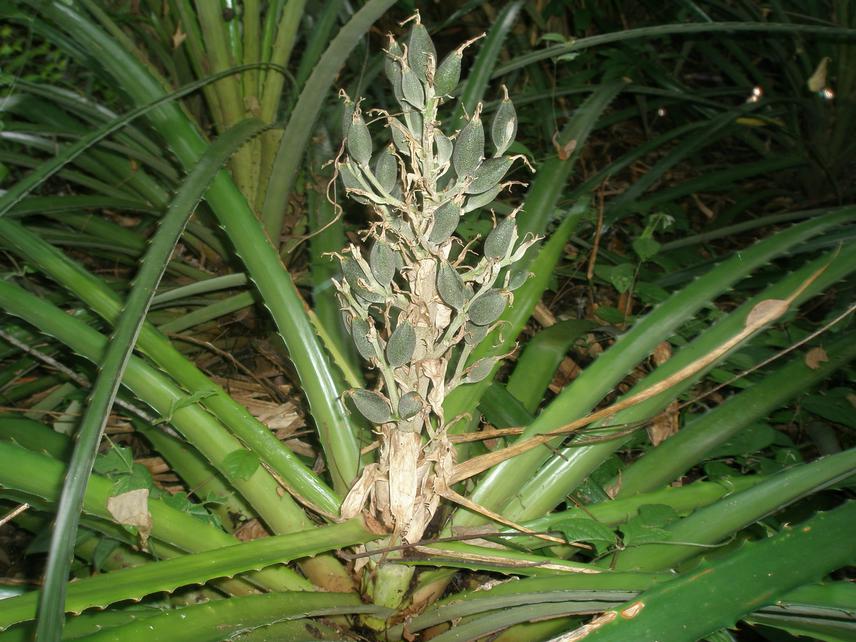Daniel Adolfo Cáceres González
The aim of the project is to provide a complete revision of the Bromeliaceae in Azuero Peninsula in order to document and digitize the distribution and ecology of the bromeliads.

Bromelia pinguin.
The Bromeliaceae are in the focus of modern systematic, phylogenetic, and ecophysiological research (Givnish & al. 2011; Zotz & al. 2008). Twenty species have been recorded by Cáceres & al. (2011) for Panama for the first time, with a fieldwork concentrated on Western Panama alone. In the Azuero Peninsula (Central Panama), intensive fieldwork is also necessary because this region is the most ecologically degraded area of the country. At present, the status of many species of plants is unknown; for example in the family Bromeliaceae, up to now the total number of the bromeliad species reported from this region does not exceed 22 spp. Species number and number of collected specimens are surprisingly low.
The project consists of several excursions in order to collect bromeliads in the region. General characteristics of the plants, type of vegetation and the ecology will be recorded during collection. All specimens will be preserved according to the methodology of pressing and drying suggested by Bridson & Forman (1998), and the specimen will be handed over to the herbaria PMA and/or UCH. Some specimens will be determined during the fieldwork, others will probably need further examination in the laboratory of the herbarium. Based on the comprehensive data recorded in the present study, the conservation status of all species of bromeliads from Azuero Peninsula will be assessed, applying the categories and following the criteria of the International Union for the Conservation of Nature (IUCN).
With this work, it is expected to raise the knowledge about the tropical forest structural behaviour in the Azuero Peninsula, especially related to the Bromeliaceae species. The results of this study can serve as an indicator for diversity and also to know the conservation status of the endemic and sensitive species. The most important areas for conservation of the national heritage in the Azuero Peninsula (highest diversity of species and endemics, occurrence of rare/endangered vegetation types) will be identified, in order to support the development of a system of protected areas as part of a national conservation concept, which is not restricted to bromeliads species, but also includes other families of plants in an ecological niche and the fauna of the region.
In addition, this work is going to document the use of species by communities in the region and/or the potential use of some bromeliads species.